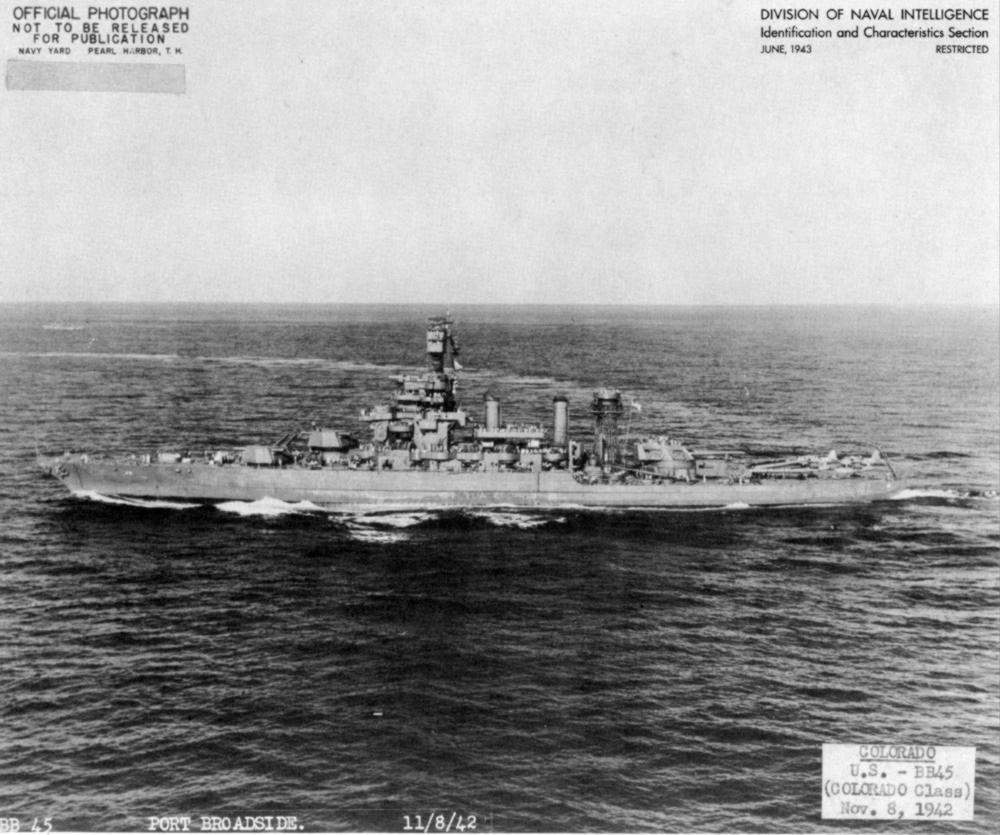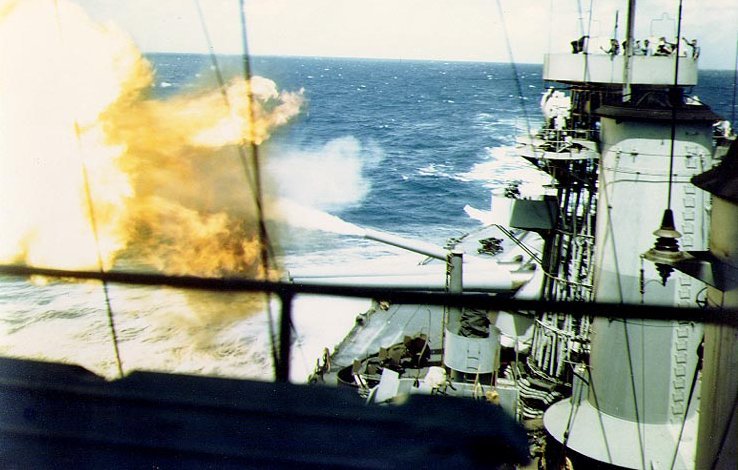- Yes
- Yes, but I prefer the other suggested configurations
- No
The Colorado class has already been suggested in both per-war and late war-configurations. I do not mean to steal the thunder of those posts. That said, most U.S. battleships in game are one of these two eras. I propose an earlier version, from when the future of the Pacific was at its most uncertain. Perhaps we could have a pre-war Maryland, an early war Colorado, and a late-war West Virginia? What do you think?
Colorado and Maryland were both spared from the fates of many other battleships at Pearl Harbor. Their sister West Virginia would not be usable again for several years. Being ready for service and with fears of imminent Japanese invasion of California rampant, these two ships were thrown into the thick of it with minimal refitting. They received some AA upgrades, but there was no time to upgrade their deck armor or superstructure. As such, these ships mark a transitionary period between the pre and post Pearl Harbor design. Both ships were extremely active in this configuration during the early US pacific campaigns in 1942 into 1943. It only seems fitting that they should have a place in-game to represent the Pacific Fleet’s darkest hours.
One of the most distinctive features is the lattice cage masts being intermixed with more modern fire control equipment. In particular, the upper section of the aft mast was cut-down on both Maryland and Colorado. They could not afford to take the time to replace it entirely, so an anti-aircraft platform was erected atop the former mast. The awkward turret-mounted catapult was removed, but the aft seaplane catapult was retained. Another transitionary piece was the single-mount 5in/38 guns. Most pre-war ships had less capable guns, and most post-retrofit ships received them in more advanced twin turret mounts. Dual gun turrets were not available in time, so the ships made do with replacing their 5in/25 guns with 5in/38 guns in single mounts. The casemate 5in/51 guns were still retained, however.
Specifications
Displacement: Between 32600 and 33600 tons depending on load
Maximum speed: 39kph
Crew: Between 1100 and 1400 (sources vary)
Aviation: One catapult for OS2U aircraft
Belt armor: 203-343mm
Deck armor: 76-158mm
Splinter deck: 33mm
Barbette armor: 330mm
Conning tower armor: 406mm
Turret armor: 457mm (front), 254mm (side), 229mm (back), 178mm (roof)
Underwater protection: torpedo bulge rated to withhold 181kg explosives
Main guns: 8 16in/45 (mark 5) cannons in four turrets
Secondary guns: 10 5in/51 casemate cannons
AA guns: 8 5in/38 guns (single mounts), 4 quad 40mm mounts, and 32 20mm autocannons.
Machinery: 8 boilers, 4 electric drives, and 4 screws
It is worth noting that the Colorado class employed the unusual configuration of not having geared turbines for the shafts. All boiler output was converted to electrical power. The shafts themselves were driven by separate electric motors. If nothing else, this at least meant the ship was easier to compartmentalize due to the lack of a need for steam flow to the propeller shafts
Additional Images of the Late 1942 Configuration



Sources
http://pwencycl.kgbudge.com/C/o/Colorado_class.htm
http://www.navweaps.com/Weapons/WNUS_16-45_mk5.php
https://www.navsource.org/archives/01/45a.htm
http://www.navsource.org/archives/01/46a.htm
See also


